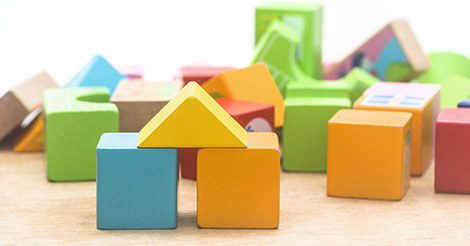Las Formas (The Shapes)
This month we are learning all about shapes. Does your child know that there is more than one way that people can name shapes, including English, Spanish, and non-verbal ways such as sign language? When children learn other ways to talk with people, they can interact with more diverse people around the world. Encourage your child to practice naming shapes in Spanish (see this month’s Spanish words listed below). Take time to practice naming shapes with your child throughout the week. Ask your child to identify various shapes (i.e., “Where’s the star? ¿Dónde está la estrella?” or “What shape is this? ¿Que forma es esta?”).
círculo – /SEAR-cue-loh/ – circle
estrella – /es-TRE-yah/ – star
cuadrado – /quad-DRAH-tho/ – square
corazón – /core-ah-ZONE/ – heart
triángulo – /tri-ANG-yoo-loh/ – triangle
óvalo – /OH-vah-loh/ – oval
rectángulo – /rec-TANG-yoo-loh/ – rectangle
rombo – /ROM-bow/ – diamond
Age-appropriate Adaptations:
- Two-year-olds—It’s important that children master new vocabulary in their primary language before learning alternative words in a second language. You can help your child learn shapes during playtime. For example, you can practice naming the shapes in English as you stack shape blocks to build a tall tower. You can also point out shapes you see outside as you go for a neighborhood walk (i.e., a sidewalk square, a rectangle sign, a circle window, a triangle roof, etc.).
- Three-year-olds—When your child has mastered the names of the shapes in English, introduce the Spanish shape names. Encourage your child to cut simple shapes out of playdough using cookie cutters. Then, ask your child to name the shapes in English and Spanish.
- Four-/Five-year-olds—Play a matching game with your child using shapes drawn on index cards. Whenever a match is made, the person should name the shape in English and Spanish.
Skills Supported: Spanish, cultural understanding, shapes

